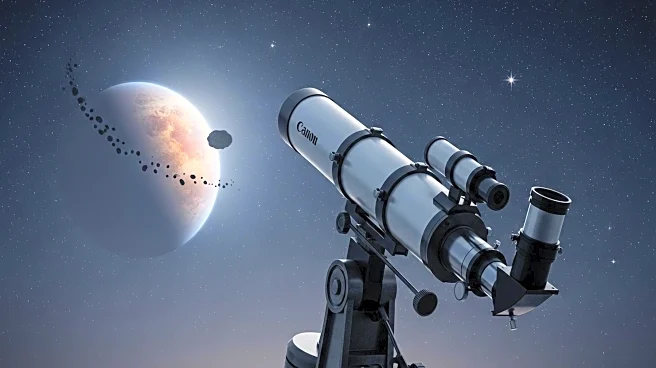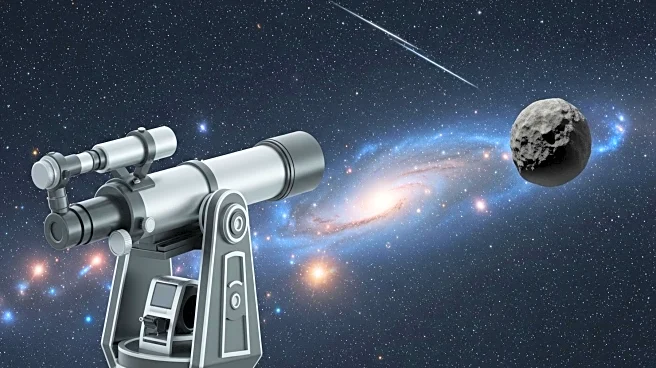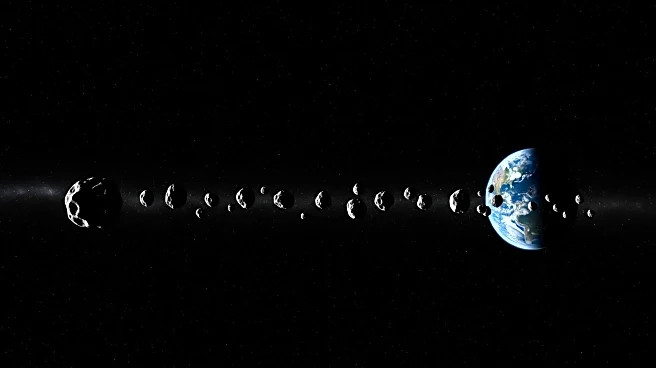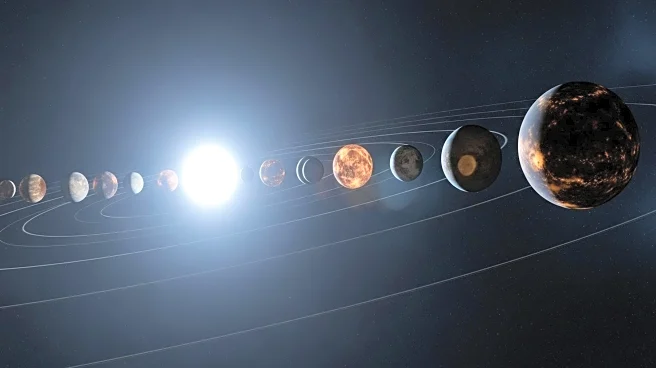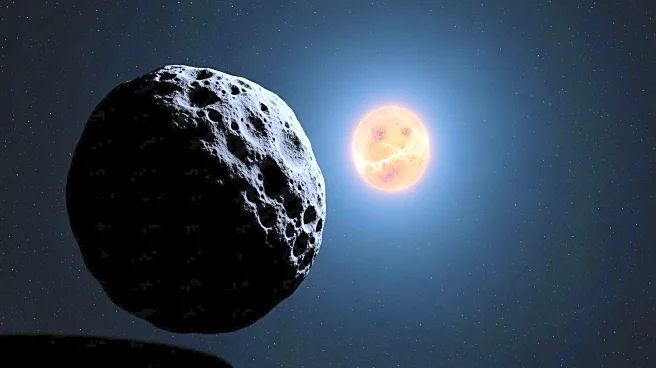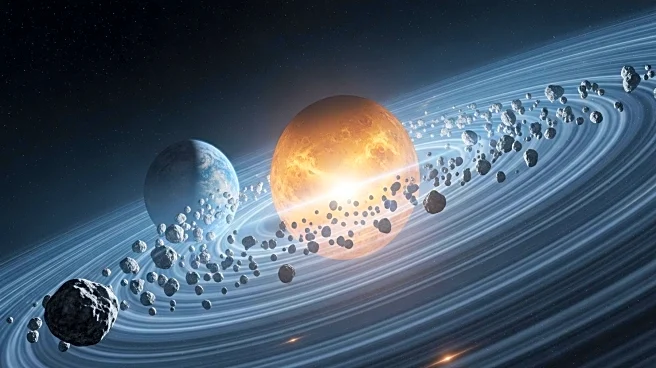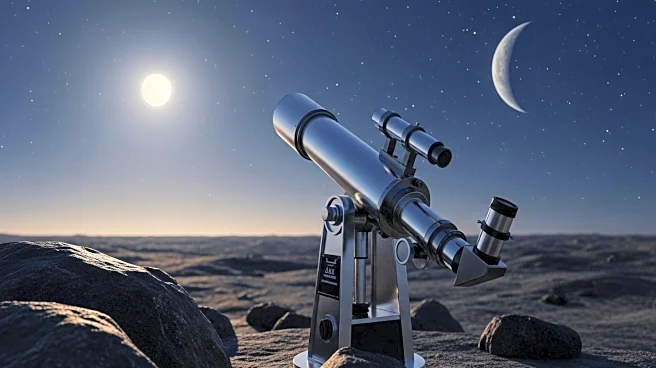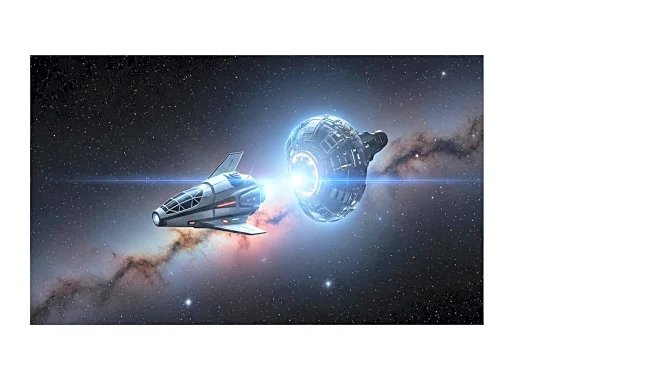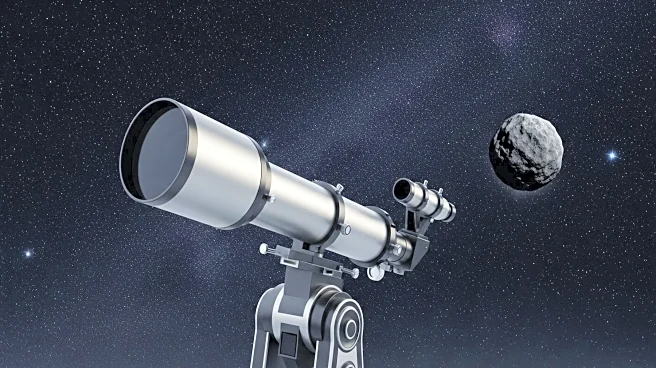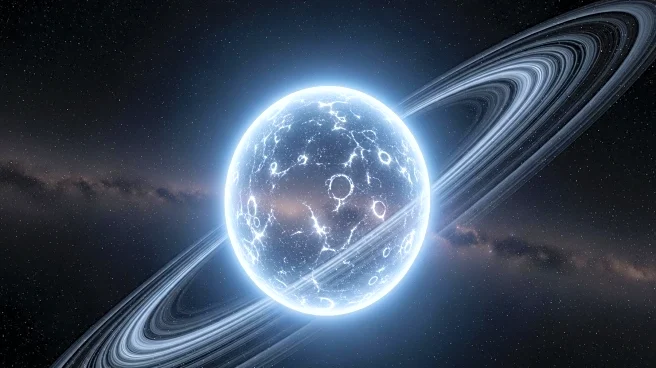What's Happening?
A recent study has identified a hidden population of asteroids sharing Venus' orbit, which could potentially threaten Earth in the future. These 'Venusian co-orbital asteroids' are difficult to detect due to the Sun's glare. The study, led by researchers at São Paulo State University in Brazil and published in Astronomy & Astrophysics, suggests that these asteroids, which orbit the Sun in the same zone as Venus, could reach Earth within a few thousand years. The asteroids are in a 1:1 resonance with Venus, completing one revolution around the Sun in the same time as the planet. Currently, only 20 such asteroids are known, but computer models indicate a larger population exists, remaining undetected due to observational biases.
Why It's Important?
The discovery of these asteroids is significant as it highlights a potential future threat to Earth. If these asteroids were to collide with Earth, they could cause significant damage, especially if they impact densely populated areas. The study emphasizes the limitations of current telescopic technology in detecting these objects, which are not part of the Asteroid Belt but are much closer to Earth. This finding could prompt advancements in observational technology and strategies to better detect and track such celestial bodies, potentially leading to improved planetary defense mechanisms.
What's Next?
Future efforts may focus on enhancing detection capabilities to monitor these asteroids more effectively. The study suggests that even the brightest of these asteroids would only be visible for short periods, indicating a need for more advanced telescopic technology. The Vera Rubin Observatory in Chile may play a crucial role in future observations, although current simulations show limitations in its ability to detect these asteroids consistently. Continued research and technological development will be essential in addressing the potential threat posed by these asteroids.

